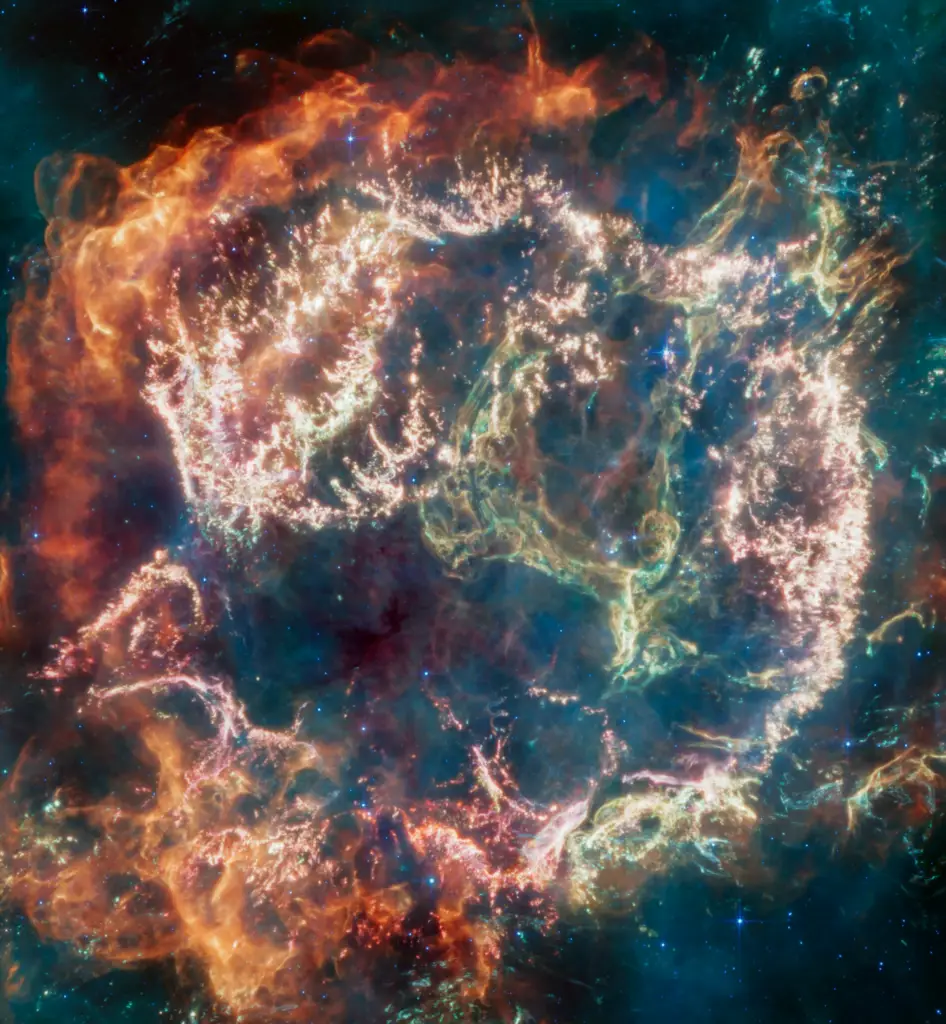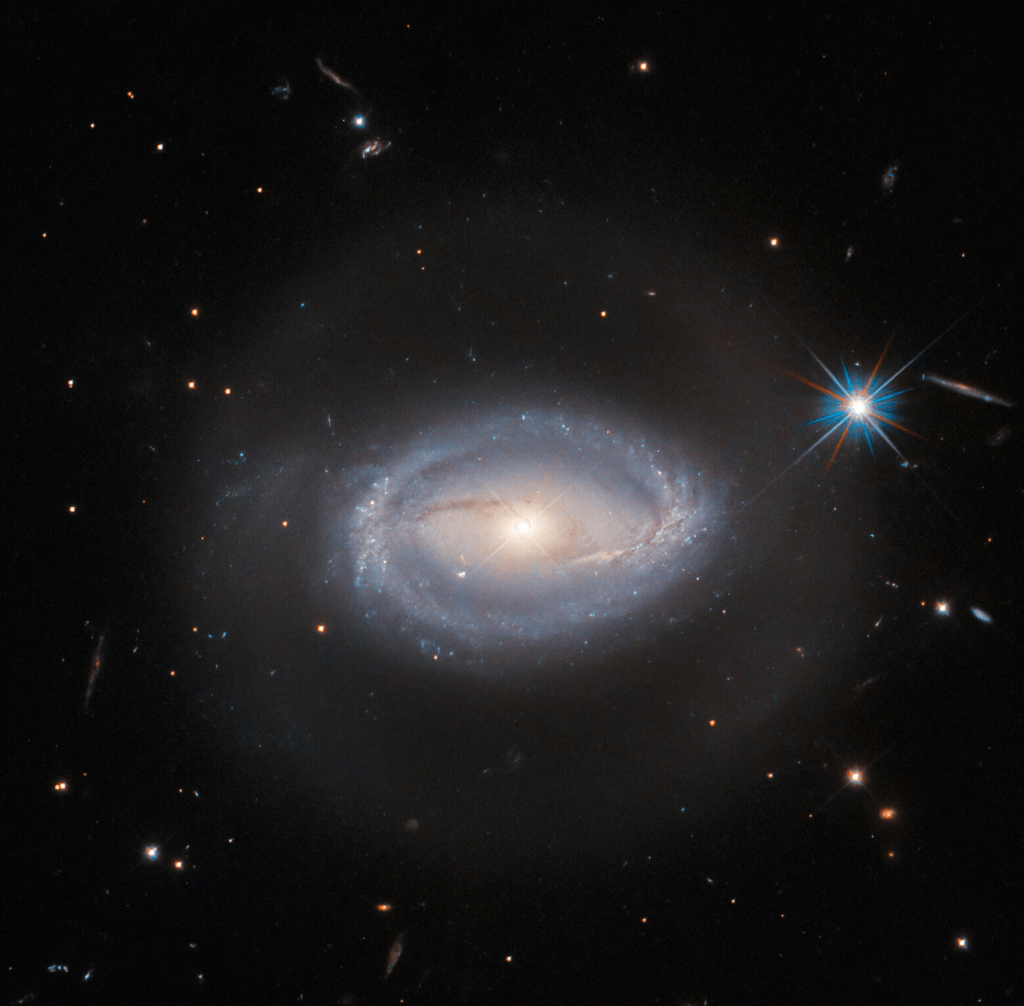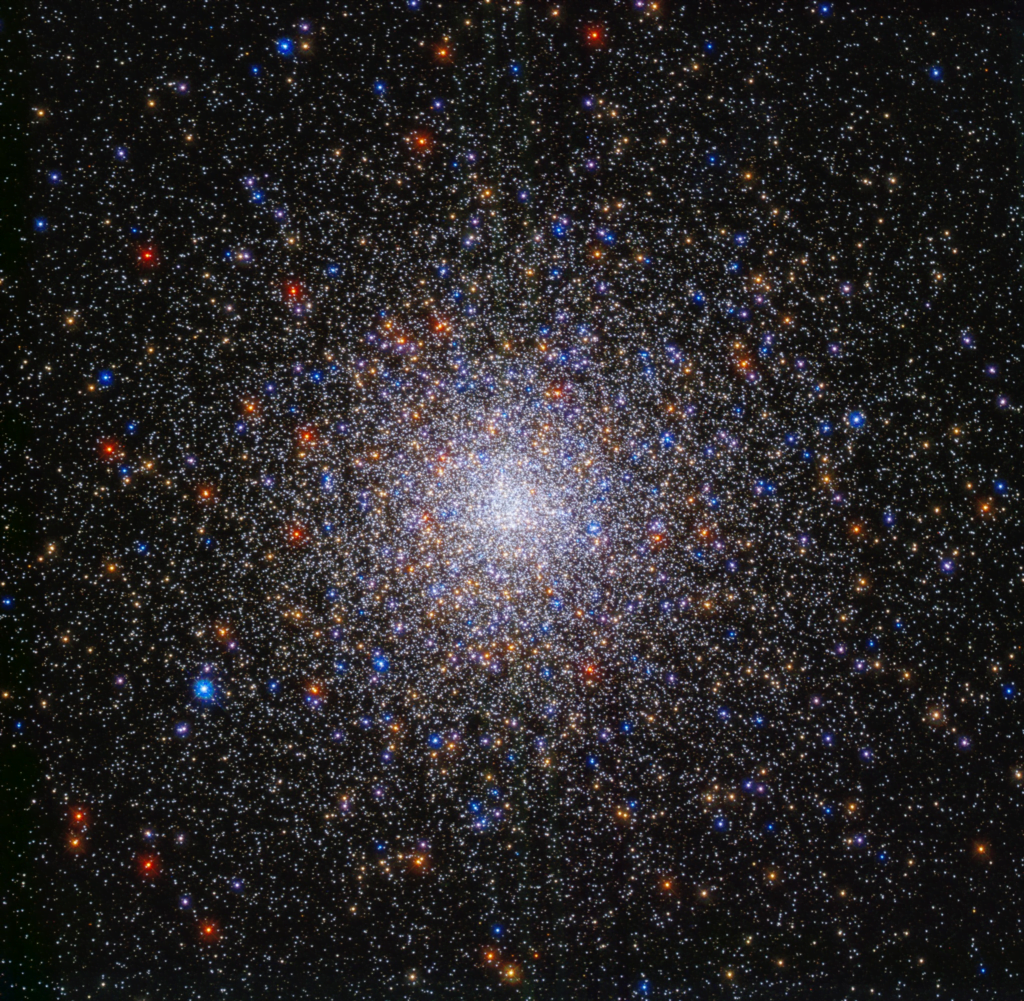All space related posts will be available here. You can know some of the mystery of the universe through this space science page. We will continue updating interesting subjects and help you to gain your knowledge.
Are NGC 3314A and B is in collision course?
The NASA/ESA Hubble Space Telescope has produced a highly detailed image of a pair of overlapping galaxies called NGC 3314. While the two galaxies look as if they are in the midst of a collision, this is in fact a trick of perspective: the two just happen to appear in the same direction from our vantage point.

The Supermassive black hole at the center of Milky Way
Sagittarius A* is a supermassive black hole located at the center of the Milky Way galaxy. It is situated in the constellation Sagittarius. Sagittarius A* is estimated to have a mass of about 4.3 million times that of our Sun, concentrated in a region less than the size of our solar system.

The seven galaxies about 13 billion Light years away!
The seven galaxies spotlighted (on the right) in this James Webb telescope image form a proto-cluster so far away, its light took about 13 billion years to reach us. Scientists predict it may grow into one of the largest, densest galaxy clusters known today.

Beautiful Images of Hubble and Webb Telescope
What do you get when you combine X-ray, infrared, and optical data? These gorgeous views showcase star cluster NGC 346, spiral galaxies NGC 1672 and Messier 74, and the Pillars of Creation (Eagle Nebula) in ways we could never see with just our eyes

James Webb Telescope captured the remnant of a massive star Cassiopeia A
Webb’s powerful infrared eye has captured never-before-seen detail of Cassiopeia A (Cas A), the remnant of a massive star that exploded about 340 years ago — from our perspective here on Earth. (Despite being 11,000 light-years away, this supernova may have been visible to the naked eye, something that has not been seen in our galaxy since.)

Supermassive black hole at the core of galaxy Z 229-1
About 390 million light-years away from earth, the galaxy Z 229-15 is home to a supermassive black hole at its core. Check the image below this post to see the Black hole at the core.

NASA’s Hubble Space Telescope imaged NCG 6956 galaxy
Against an inky black background, the blue swirls of spiral galaxy NGC 6956 stand out radiantly. NGC 6956 is a barred spiral galaxy, a common type of spiral galaxy with a bar-shaped star structure at its center. This galaxy exists 214 million light-years away in the constellation Delphinus.

Beautiful spiral galaxies captured by James Webb Telescope
Feel like you’re spiraling? You’re in good company! Rotate with these galaxies!
The Webb telescope’s images of NGC 1433. Those reveal the galaxies’ networks of gas and dust in extraordinary detail. This data is part of an ongoing Webb survey of 19 spiral galaxies.

The James Web Telescope discovered tripled galaxy
This Webb image features a special galaxy that appears three times. Why? There’s a galaxy cluster here whose mass and gravity are so great that time and space around it gets warped. This magnifies, multiplies, and distorts distant galaxies behind the cluster, such as the one highlighted in the three white boxes. The effect is known as gravitational lensing.

Webb’s stunning image of a super bright, massive Wolf-Rayet Star
Webb’s stunning image of a super bright, massive Wolf-Rayet star calls forth the ephemeral nature of cherry blossoms. The Wolf-Rayet phase is a fleeting stage that only some stars go through, soon before they explode.

The Boomerang Nebula, made of two lobes of matter being ejected from one central star.
This HubbleClassic image from 2005 shows the Boomerang Nebula, made of two lobes of matter being ejected from one central star.

Hubble has imaged most of the objects in the Messier Catalog
Hubble has imaged most of the objects in the Messier catalog, which includes fascinating astronomical targets that can be seen from the northern hemisphere.

NASA’s Hubble Telescope image shows the dense globular cluster M14
Milky way galaxy is then home of billions of stars. This sparkling new Hubble image shows the brilliant globular cluster M14 where stars are very closely set.

Hubble Telescope has a new view of M80 globular cluster
M80 is one of the densest of the known globular clusters in the Milky Way. It’s about 28,000 light-years away from early in the constellation Scorpius and contains hundreds of thousands of stars. Truely , a tight cluster.

The fifth brightest galaxy in the sky, Caldwell 77
The fifth brightest galaxy in the sky, Caldwell 77 is 60,000 light-years wide but this image depicts only 8,500 light-years of it!

James Webb Space Telescope discovered a new black hole
James Webb Space Telescope and Hubble had launched to view the distant Galaxies, black holes, stars, nebula etc. interstellar objects to have multiple research on the birth of our universe. Recently, it has done some great work by discovering new planets nebula’s galaxies and some black holes those are millions of light years away.

